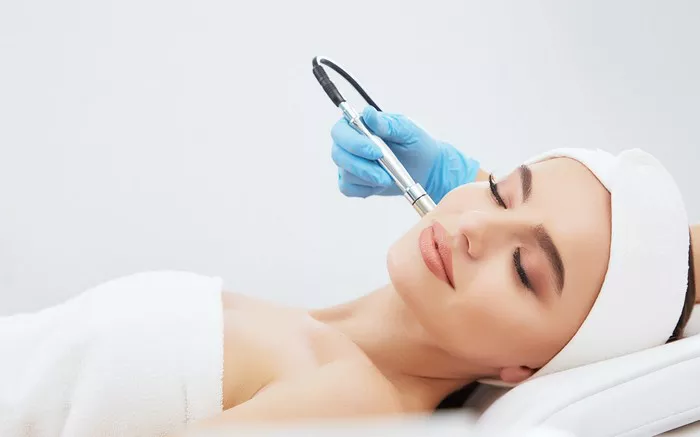Microneedling is a cosmetic treatment that involves using a device with small needles to create tiny punctures in the skin. This process is designed to stimulate collagen production and improve the appearance of fine lines, wrinkles, and scars. While microneedling is becoming increasingly popular as an anti-aging treatment, many people are still unsure about its effectiveness and safety. In this article, we will explore the benefits and risks of microneedling for anti-aging and answer the question: does microneedling make your face look younger?
What is Microneedling?
Microneedling is a cosmetic treatment that involves using a device with small needles to create tiny punctures in the skin. This process is designed to stimulate collagen production and improve the appearance of fine lines, wrinkles, and scars. The device used for microneedling can vary, but typically involves a roller or pen-like device with small needles that penetrate the skin.
Microneedling is typically performed in a medical or spa setting by a trained professional. The procedure can take anywhere from 30 minutes to an hour, depending on the size of the treatment area. Patients may experience some redness and swelling following the procedure, but this typically subsides within a few days.
How Does Microneedling Work?
Microneedling works by creating tiny punctures in the skin, which triggers the body’s natural healing response. This response includes the production of collagen and elastin, which are two proteins that are essential for healthy, youthful-looking skin.
Collagen and elastin are responsible for the skin’s elasticity and firmness. As we age, our bodies produce less collagen and elastin, which can lead to the appearance of fine lines, wrinkles, and sagging skin. Microneedling helps to stimulate the production of these proteins, which can improve the overall appearance of the skin.
Benefits of Microneedling for Anti-Aging
Microneedling has several benefits for anti-aging, including:
Reduced Appearance of Fine Lines and Wrinkles
One of the main benefits of microneedling for anti-aging is the reduction in the appearance of fine lines and wrinkles. The stimulation of collagen and elastin production can help to plump up the skin and reduce the appearance of fine lines and wrinkles.
Improved Skin Texture and Tone
Microneedling can also improve the texture and tone of the skin. The production of collagen and elastin can help to smooth out rough skin and improve the overall texture of the skin. This can also help to reduce the appearance of acne scars and other types of scars.
Increased Skin Firmness and Elasticity
Another benefit of microneedling for anti-aging is increased skin firmness and elasticity. The production of collagen and elastin can help to improve the skin’s elasticity and firmness, which can reduce the appearance of sagging skin.
Reduced Appearance of Pores
Microneedling can also help to reduce the appearance of pores. The tiny punctures created by the needles can help to unclog pores and reduce their size, which can improve the overall appearance of the skin.
Risks and Side Effects of Microneedling
While microneedling is generally considered safe and effective, there are some potential risks and side effects associated with this treatment. These include:
Infection
One of the main risks of microneedling is the potential for infection. The tiny punctures created by the needles can provide a pathway for bacteria to enter the skin. This can lead to infection, which can cause redness, swelling, and pain.
To reduce the risk of infection, it is important to ensure that the microneedling device is properly sterilized before use. Patients should also follow all post-treatment care instructions provided by their provider, such as avoiding touching the treatment area and keeping the skin clean and dry.
Skin Irritation
Another potential side effect of microneedling is skin irritation. The punctures created by the needles can cause redness, swelling, and itching. This is typically a temporary side effect and should subside within a few days.
However, some patients may experience more severe skin irritation, such as a rash or hives. If this occurs, it is important to contact your provider for further evaluation and treatment.
Hyperpigmentation
Hyperpigmentation is a potential risk of microneedling, particularly in patients with darker skin tones. This occurs when the skin produces too much melanin in response to the treatment, resulting in dark spots or patches on the skin.
To reduce the risk of hyperpigmentation, it is important to choose a qualified provider who has experience working with patients of all skin types. Patients should also avoid sun exposure and wear sunscreen following the procedure.
Scarring
While microneedling is designed to improve the appearance of scars, there is a potential risk of scarring with this treatment. This can occur if the needles are too long or if the treatment is too aggressive.
To reduce the risk of scarring, it is important to choose a qualified provider who has experience working with patients with scars. Patients should also follow all post-treatment care instructions provided by their provider, such as avoiding sun exposure and keeping the skin clean and dry.
Conclusion
Microneedling can be an effective anti-aging treatment that can help to reduce the appearance of fine lines, wrinkles, and scars. However, it is important to choose a qualified provider who can help you understand the potential risks and benefits of this treatment and ensure that you receive safe and effective care. While microneedling is generally considered safe and effective, there are some potential risks and side effects associated with this treatment, including infection, skin irritation, hyperpigmentation, and scarring. If you are considering microneedling, it is important to discuss your options with a qualified provider and make an informed decision about your treatment.


